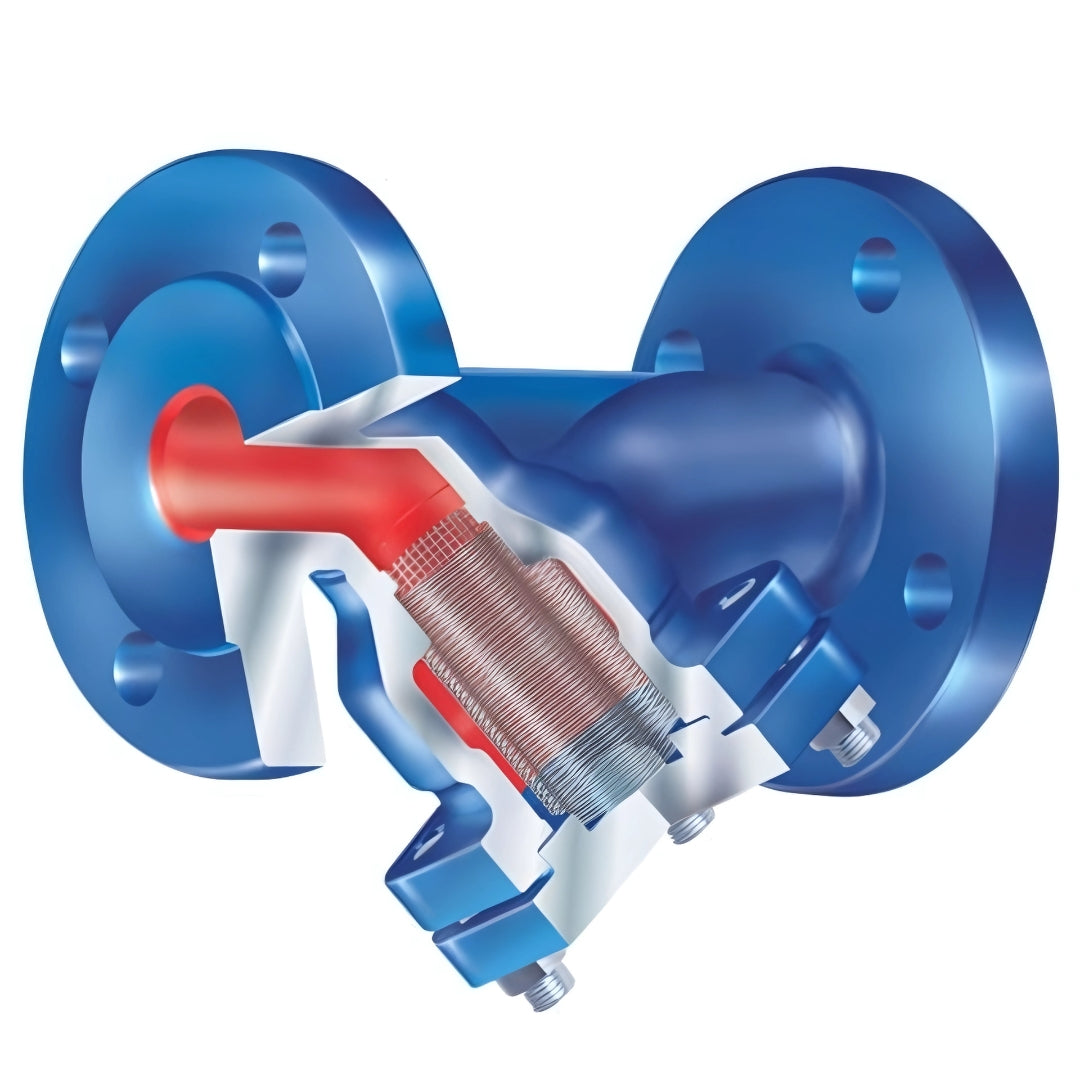Steam Valves
ARI Y-Type Strainer (Flanged PN16, Nodular Iron Body)
ARI Y-Type Strainer (Flanged PN16, Nodular Iron Body)
Couldn't load pickup availability
The ARI Y-Type Strainer with PN16 flanged connections and a nodular cast iron body is designed to protect piping systems and downstream equipment by capturing and removing debris, rust, and particulate matter from process media. Installed upstream of pumps, control valves, and steam traps, this strainer improves system reliability, reduces maintenance downtime, and extends equipment life.
Manufactured from nodular cast iron, the valve body offers excellent strength, flexibility, and resistance to pressure fluctuations, making it ideal for general-purpose use in heating, water, and low-pressure steam systems. The PN16 pressure rating allows safe operation in a range of standard pipeline configurations, while the Y-pattern design ensures efficient filtration with minimal pressure drop. A built-in blow-off connection allows for easy cleaning of the strainer element without needing to remove the cover, reducing service time and simplifying maintenance routines.
Key Features
Nodular Iron Body
Durable and pressure-resistant material offering strength and thermal stability for everyday industrial and utility systems.
PN16 Flanged Ends
Compatible with standard pipeline configurations operating up to 16 bar pressure.
Y-Pattern Flow Path
Compact design with smooth flow characteristics and reduced pressure loss across the strainer.
Stainless Steel Mesh Element
Corrosion-resistant internal strainer ensures efficient filtration and long service life.
Blow-Off Connection
Enables quick and easy sediment removal without disassembling the unit.
Ideal for Water, Steam, and HVAC Applications
Protects valves, pumps, and heat exchangers from blockages and wear in a wide range of systems.
Share

FAQ's
What is the difference between a valve and an actuator?
What types of actuators are available?
The main types of actuators are:
Pneumatic actuators – use compressed air for fast, reliable operation.
Electric actuators – use electrical power for precise control.
Hydraulic actuators – use fluid pressure for high-torque applications.
Each type offers unique advantages depending on the environment, media, and system control needs.
How do I choose the right actuator for my valve?
To select the correct actuator, consider:
Valve type and torque requirement
Power source available (air, electric, or hydraulic)
Operating environment (temperature, humidity, hazardous area)
Control signal type (on/off or modulating)
Matching actuator torque and compatibility with the valve’s ISO mounting ensures reliable performance.
What are the main types of valves used in automation?
The most common valves in automated systems include:
Ball valves – for tight shutoff and quick operation.
Butterfly valves – for larger flow control with compact design.
Globe valves – for precise throttling and flow regulation.
Check valves – to prevent backflow.
Gate valves – for full bore flow isolation.
What’s the difference between a double-acting and spring-return actuator?
Double-acting actuators use air (or power) to both open and close the valve.
Spring-return actuators use air to open (or close) the valve, and a built-in spring to automatically return it to a safe position when power or air is lost — ideal for fail-safe operation.
How often should valves and actuators be serviced?
Regular maintenance intervals depend on operating conditions, but a good rule of thumb is to inspect every 6–12 months.
This includes checking for leaks, lubrication, seal wear, and actuator responsiveness to prevent unexpected downtime.

